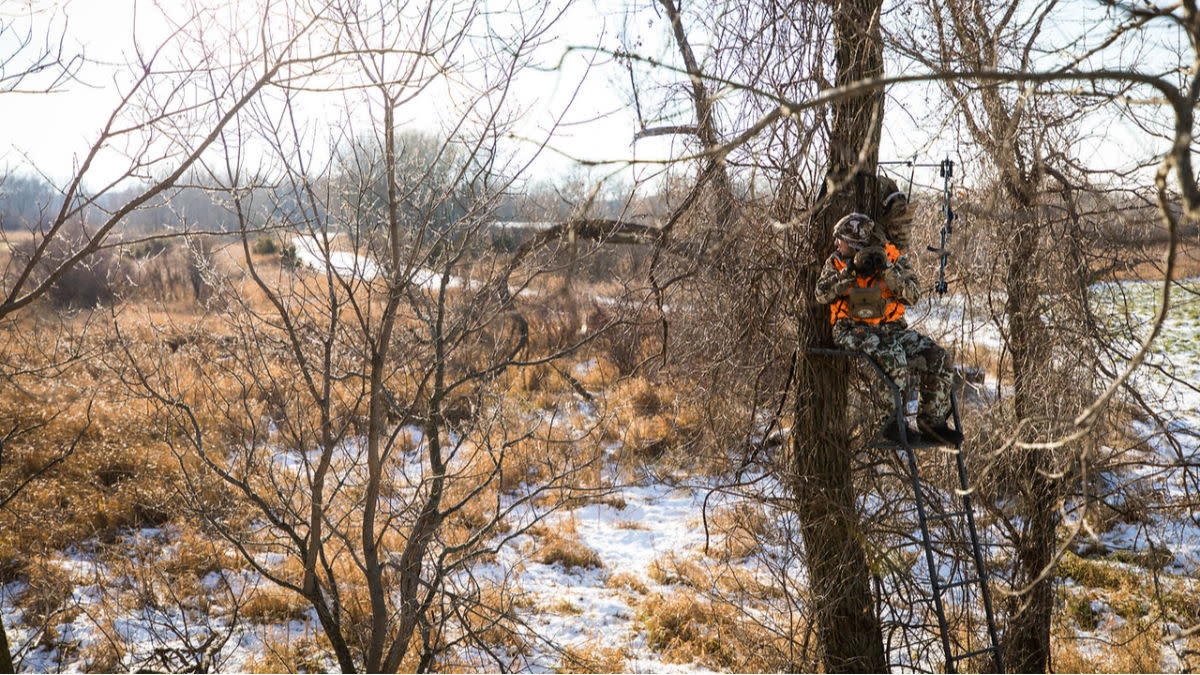
A twig snaps. You can hear footsteps. A four-legged figure approaches. A deer? Nope, just a coyote. For many hunters, the immediate next step is to reach for the gun or bow. But is that such a good idea?
The first issue of concern when shooting a ’yote mid-deer hunt is the impact of the shot itself. When a silent, still morning is broken by the shocking report of a rifle, there’s the real risk of alerting nearby deer. And after the shot, the coyote might yelp, bark, or race off into the brush, creating even more commotion. If you’re going to take that shot, you better be confident there are no deer nearby.
Next, you’ll need to consider the aftereffects of the shot. If a deer passes through and sees a dead coyote or crosses a blood trail, there’s no doubt it will catch their attention. Maybe they’ll be curious and come closer, but they also might spook at the strong scent of a predator. Matt Ross, avid deer hunter and assistant director of conservation for the QDMA, has heard firsthand of situations such as this.
“Killing a few coyotes may feel good and it certainly means one less coyote on the landscape, but it’s important to realize it offers limited influence to the goal of helping deer numbers and it does come with some small risks, too,” Ross said. “A friend killed a coyote just a few years ago and witnessed deer reacting negatively to the sight/smell of the carcass an hour later while he was still on stand.”
It’s true that coyotes can affect deer populations, with their most notable impact being on fawns. Various studies show coyote predation accounts for anywhere from 37% to 80% of fawn mortality. This is a temporal issue though; the greatest impacts are felt where there is insufficient fawning cover in the spring. At a macroscopic level it’s a different story. As a new study published this year in the Journal of Wildlife Management says, “Results indicate that coyotes are not controlling deer populations at a large spatial scale in eastern North America.”
So yes, coyotes do prey on deer, and in some instances they impact deer populations. The experts agree that there are several ways to address this, with habitat improvement being the most effective method. Better spring fawning habitat equals fewer fawns eaten by coyotes. After that, widespread trapping efforts timed around fawn drop in the spring can help as well.
What’s not effective is the shooting of a random coyote here and there. According to John Kilgo, a wildlife research biologist for the U.S. Forest Service, doing this is akin to “a drop in the bucket. It won’t have any effect on coyotes or your deer hunting.”
Ronald Kays, co-author of the aforementioned study in the Journal of Wildlife Management, told The Wildlife Society, “Reducing coyote numbers to increase deer won’t help, and it could create further problems if their social structure is interrupted. Remove a dominant coyote from an area, and it’s likely that more coyotes will swarm in and jockey for position.”
If a random ‘yote walks by your stand and you want to take a crack to get its pelt, go for it. Just know that you’re risking the rest of your deer hunt, and most states let you hunt coyotes all year. If you think you’re making a difference for the local deer herd, you’re simply spinning your wheels.
In his book, “Coyote America,” author Dan Flores wrote, “This is truly an instance in which any desire on our part to control nature is perfectly countered by a profound inability to do so.”
Instead of reaching for a weapon, consider the possibility of sitting back and watching another cunning hunter at work, doing exactly what Mother Nature built it to do. You might just learn a thing or two.






